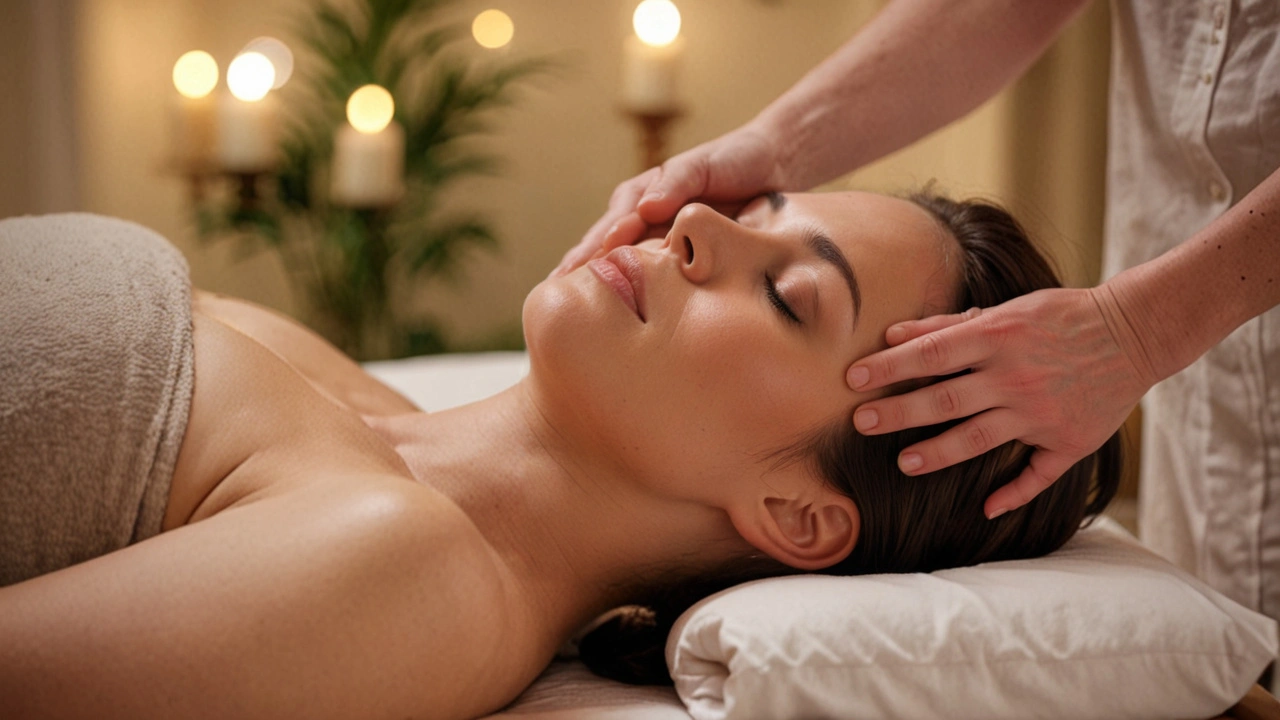Comprehensive Guide to Craniosacral Therapy for Beginners
 Jul, 18 2024
Jul, 18 2024
Have you ever heard of Craniosacral Therapy and wondered what it’s all about? This gentle, hands-on technique is gaining popularity as a natural way to reduce pain, improve health, and enhance overall well-being.
In this beginner’s guide, we’ll delve into the details of Craniosacral Therapy, exploring how it works, the wide range of benefits it offers, and practical tips for those interested in trying it. Whether you are looking for a new method to alleviate stress or seeking ways to enhance your health, this guide will provide valuable insights.
- What is Craniosacral Therapy?
- How Craniosacral Therapy Works
- Health Benefits of Craniosacral Therapy
- Finding a Qualified Craniosacral Therapist
What is Craniosacral Therapy?
Craniosacral Therapy (CST) is a gentle, non-invasive form of bodywork that focuses on the bones of the head, spinal column, and sacrum. It aims to release compression in these areas which alleviates stress and pain. Developed by Dr. John E. Upledger in the 1970s, this therapy is based on the concept that the body's craniosacral system (which includes the membranes and fluid surrounding the brain and spinal cord) has a rhythmic pulse that can be detected and manipulated.
The core belief behind CST is that the body contains its own healing intelligence and that gentle touch can help enhance its natural healing processes. Practitioners use light touch to examine membranes and movement of fluids in and around the central nervous system. This helps relieve tension and improve the body's capability to restore balance. The technique is so gentle that it can even be used safely on infants and the elderly.
“I have found that Craniosacral Therapy is effective for alleviating a wide range of medical issues, including headaches, chronic pain, and stress-related disorders,” says Dr. John E. Upledger.
Interesting to note is that Craniosacral Therapy isn’t solely about treating specific ailments. It’s also used to improve overall health and well-being. By addressing the core sheaths that protect the brain and spinal cord, CST can have a ripple effect on various bodily functions. Many people report feeling deeply relaxed after sessions, experiencing improved emotional and mental clarity.
The practice of CST involves the therapist gently placing their hands on the patient, which allows them to feel the craniosacral rhythm. They may then use subtle manipulations to help the body release any restrictions. The session usually lasts about an hour, and patients often lie fully clothed on a padded table. While CST might sound intricate, the application is simple and its benefits can be profound. It's a holistic approach aimed at harnessing the body's intrinsic healing abilities by addressing both physical and emotional well-being.

How Craniosacral Therapy Works
Understanding how Craniosacral Therapy (CST) works provides insight into why it’s becoming such a popular method for promoting health and relaxation. This gentle practice revolves around the craniosacral system, which includes the membranes and fluid surrounding the brain and spinal cord. By addressing imbalances or restrictions in this system, CST aims to enhance the body's natural healing processes.
The process typically starts with a certified therapist conducting a thorough evaluation of your craniosacral system through a light, non-invasive touch. The therapist feels for subtle rhythmic movements of the cerebrospinal fluid that flows within the central nervous system. This is often referred to as the 'craniosacral rhythm'. Tiny restrictions or dysfunctions within this rhythm can lead to various health issues.
One of the fascinating aspects of CST is how it influences the autonomic nervous system. When the therapist identifies and gently manipulates any restrictions, it encourages the body to self-correct. This can result in relief from pain and stress, and it can improve overall physical function. Research has shown that CST can be effective in treating conditions like migraines, chronic pain, and even stress-related disorders.
‘Craniosacral Therapy brings balance to the body and essentially allows the body to heal itself,’ notes Dr. John Upledger, who was instrumental in developing and promoting the practice.
Many people describe the experience as deeply relaxing. It’s not uncommon for clients to feel as though they are in a meditative state during a session. The gentle nature of CST makes it suitable for individuals of all ages, from newborns to the elderly. Each session is unique, with the therapist tailoring their approach to the specific needs of the individual.
During a typical CST session, you’ll remain fully clothed and lie on a comfortable treatment table. The therapist uses a very light touch, often no more than the weight of a nickel, to assess and address restrictions in the craniosacral system. Sessions usually last about an hour, but the duration can vary based on individual needs
Interestingly, studies have indicated that CST not only assists in physical ailments but can also positively impact emotional and psychological well-being. This holistic approach underscores the interconnectedness of body and mind. In some cases, clients report experiencing emotional releases during or after sessions, which can be therapeutic and healing.
As with any therapeutic practice, the key to success with CST lies in finding a qualified and experienced therapist. Certification from recognized organizations ensures that the practitioner has undergone rigorous training and adheres to professional standards. This ensures you receive the safest and most effective care possible.

Health Benefits of Craniosacral Therapy
Craniosacral Therapy (CST) stands out for its gentle approach, offering numerous health benefits. One of the primary things people seek relief from with CST is chronic pain. Whether it’s headaches, back pain, or joint discomfort, the light touch used in this therapy can make a significant difference. By releasing tensions deep in the body, CST promotes natural healing and pain relief.
In addition to pain relief, CST is known to enhance emotional well-being. Many individuals report feeling a sense of calm and reduced anxiety after their sessions. This is because the therapy encourages relaxation and helps activate the body’s parasympathetic nervous system, which is crucial for stress management and mental health.
One fascinating aspect of CST is its potential in aiding individuals who suffer from conditions like insomnia or other sleep disorders. By easing tension and imbalances in the craniosacral system, CST can improve sleep quality. Better sleep, in turn, leads to improved overall health and quality of life.
Beyond mental and emotional benefits, CST is believed to support the immune system. By boosting circulation and addressing any blockages in the craniosacral system, the body becomes more efficient at fighting off illnesses. According to a study published in the Journal of Alternative and Complementary Medicine, participants who received CST treatments showed improved immune function markers.
For those with neurological conditions, Craniosacral Therapy can offer a gentle alternative to more invasive treatments. It’s been used to help individuals with autism, cerebral palsy, and multiple sclerosis, among other conditions. The therapy’s focused touch helps in balancing the fluid around the brain and spinal cord, which can lead to noticeable improvements.
The benefits of CST are not just limited to adults. Many parents seek this treatment for their children, particularly for issues like ADHD or colic in infants. The gentle nature of the therapy makes it a safe option even for the youngest patients.
Lastly, CST promotes overall well-being. By encouraging your body to release stress and tension, you’re likely to feel more in tune with yourself. This holistic approach to health is what makes Craniosacral Therapy a preferred choice for many people seeking a balanced life.
“Craniosacral Therapy invites your body to deeply relax and begin to heal itself,” says Dr. John Upledger, a pioneer in the field.
In summary, Craniosacral Therapy offers a myriad of benefits, ranging from pain relief to emotional well-being and enhanced immune function. Whether used alone or as a complement to other treatments, its gentle approach has appealed to people of all ages.
